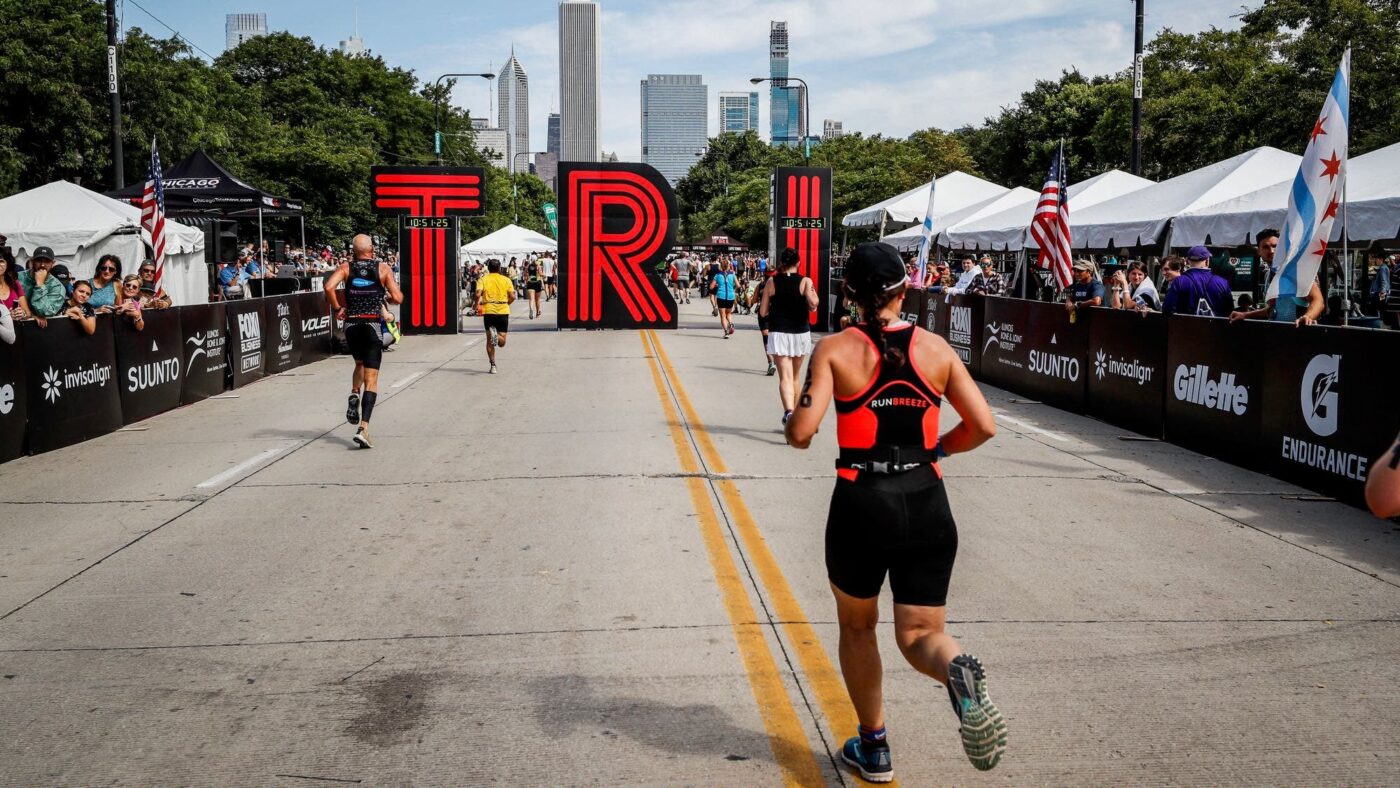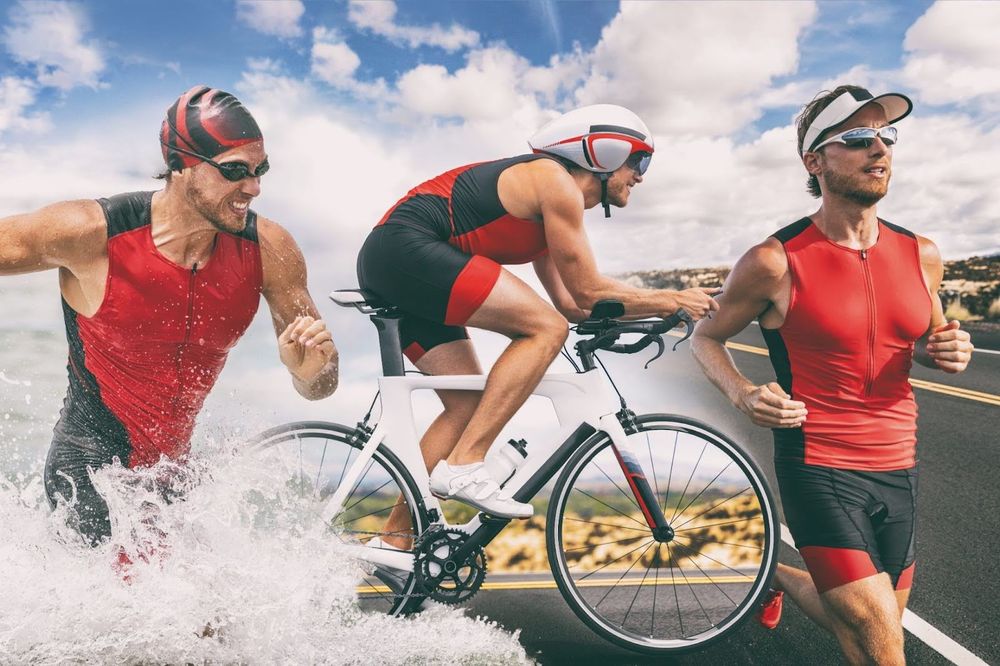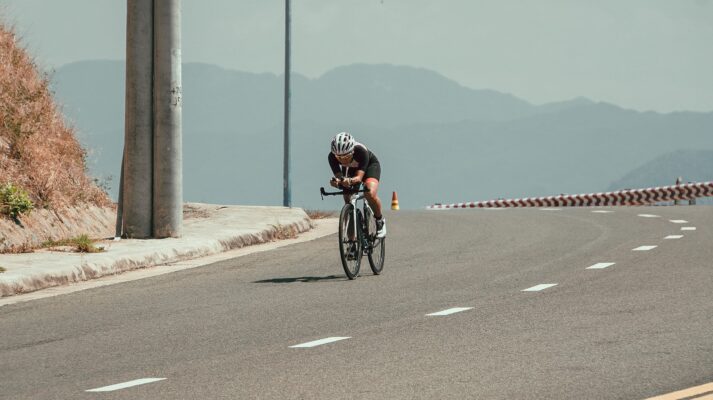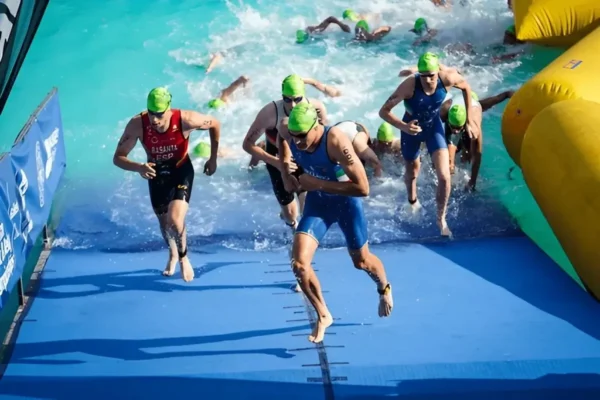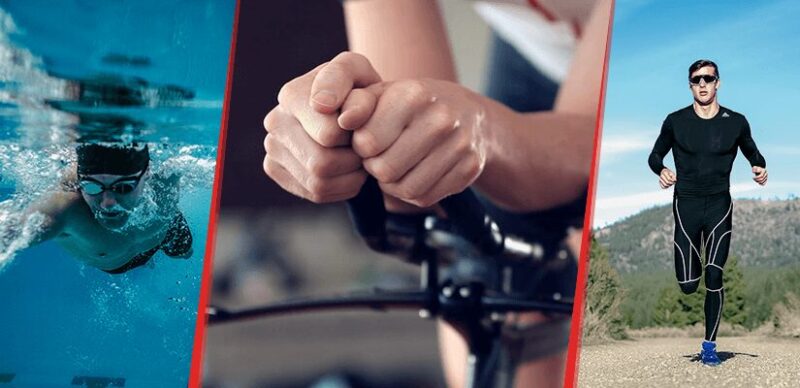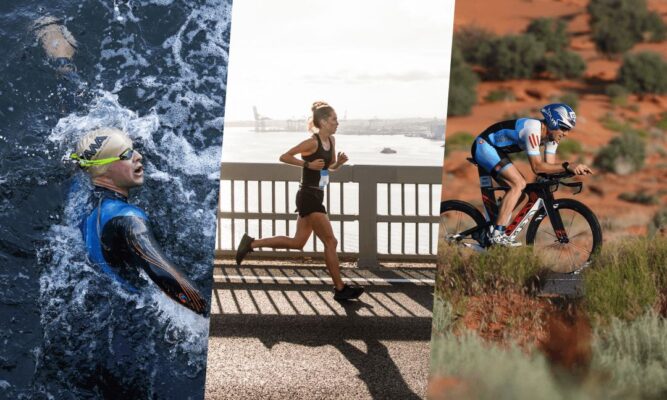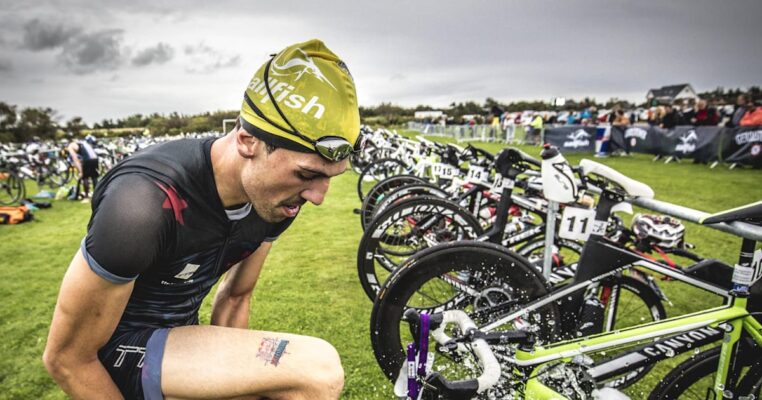posts
How to Start Your Triathlon Journey: A Step-by-Step Guide
Introduction:
Welcome to the world of triathlon! Triathlon is an incredible sport that combines swimming, cycling, and running, whether you’ve been motivated by well-known races, friends who compete, or simply want an exciting, demanding way to challenge yourself. We at Tri-n-Win think that everybody can get started. You can start your triathlon journey in a rewarding, sustainable, and safe manner with the aid of this blog.
The International Olympic Committee recognises triathlon as a sport, and it is becoming more popular with both fans and competitors who are willing to put in a lot of hard work. It is no surprise that it is thought to be one of the hardest sports in the world; it requires every muscle in the athlete’s body to work hard. But most importantly, this is a test of willpower and a personal challenge.
1. Define Your Motivation & Goals
Before you start training, take a moment to think about why you want to do a triathlon. Is it to challenge yourself, get fitter, have fun, or maybe support a cause? Knowing your “why” will keep you motivated when training gets tough.
Next, choose the type of race that fits you best. If you’re new, start small with a Sprint Triathlon, about a 750 m swim, 20 km bike, and 5 km run. As you gain experience, you can move up to Olympic, Half Ironman, or even a Full Ironman distance.
Finally, set a realistic timeline for your first race. At Tri-n-Win, we recommend giving yourself 12–24 weeks to prepare. This gives you enough time to build fitness, learn the basics, and train with confidence. Clear goals help you stay focused and enjoy every step of your triathlon journey.
2. Assess Where You Are Now
Before you start training, take a moment to understand your current fitness level. Do you already swim, bike, or run regularly? Or are you starting from scratch? Knowing where you stand helps you train smarter and stay safe.
Think about any injuries or health issues you may have, and if needed, get a quick check-up before beginning. Also, identify your strongest and weakest disciplines. Many beginners are comfortable with one or two sports but find the third more challenging, and that’s completely normal!
Lastly, look at the gear you already have: goggles, a bike, running shoes, or a fitness watch. You don’t need fancy equipment to start.
At Tri-n-Win, we believe success begins with understanding your starting point. When you know where you are, you can build a realistic plan that helps you grow without injury or burnout.
3. Build the Right Mindset & Habits
Success in triathlon isn’t about doing everything perfectly; it’s about being consistent and showing up, even on tough days. Improvement takes time, so stay patient and trust the process.
Remember, rest is part of training. Your body gets stronger when you recover, not just when you work hard. Enjoy the variety that triathlon brings: swimming, cycling, and running. Keep things fresh and exciting.
Keep track of your progress using a journal or training app so you can see how far you’ve come. And don’t train alone — join a local or online community for motivation and support.
At Tri-n-Win, we believe a positive mindset and steady habits are the real keys to crossing every finish line with confidence.
4. Get the Basic Gear
You don’t need expensive, high-end gear to start your triathlon journey, just the basics to train comfortably and safely. For swimming, a good swimsuit or trisuit, goggles, and a swim cap are all you need. If you’ll be training in open water, you can add a wetsuit later for warmth and buoyancy.
For the bike leg, focus on having a reliable bike and a helmet that fits properly. A puncture repair kit and water bottles are must-haves for longer rides. As you gain experience, you might invest in clipless pedals, cycling shoes, or even aero bars for better performance.
When it comes to running, a pair of quality running shoes is your best investment. Choose shoes that feel comfortable and suit your stride. Lightweight clothes and good socks will make a big difference, too.
Finally, a simple watch or fitness tracker helps you monitor your workouts. Sun protection and hydration gear are useful for outdoor training. At Tri-n-Win, we always say start simple, train smart, and upgrade as you grow.
5. Create or Follow a Training Plan
A good training plan is the foundation of your triathlon success. It should balance training volume, intensity, and recovery, allowing your body to get stronger without burning out. The goal is steady progress, not doing too much too soon.
Most training plans move through four main phases. The base phase focuses on building general fitness with slow, steady workouts. The build phase adds more time and intensity to prepare your body for race effort. During the peak phase, your sessions become more race-specific, including “brick” workouts where you bike and then run right after. Finally, the taper phase reduces training volume so you can rest and feel fresh for race day.
A simple weekly structure for beginners could look like this:
- Monday: Swim + light strength or rest
- Tuesday: Bike (steady)
- Wednesday: Run (easy) + swim
- Thursday: Bike (intervals or hills)
- Friday: Swim or rest
- Saturday: Long bike + short run (brick)
- Sunday: Long run or endurance session
Always keep at least one rest day per week. Gradually increase your training by no more than about 10% each week to avoid injury. At Tri-n-Win, we believe a clear plan keeps you focused, motivated, and confident. Whether you follow a structured program or work with a coach, consistency and recovery are the real secrets to triathlon success.
6. Focus on Technique & Drills
In triathlon, efficiency is everything. The better your technique, the less energy you waste and the stronger you’ll feel on race day. Even small improvements in form can make a big difference in your performance.
In the swim, focus on smooth, controlled movements and proper breathing. Practice simple drills like the catch-up, fingertip drag, or side kicking to improve your stroke and body position. For the bike, work on basic handling skills such as cornering, shifting gears smoothly, and maintaining a steady cadence. Learn to climb and descend confidently, especially if your race course includes hills.
When running, pay attention to your posture and rhythm. Try to keep a quick, light cadence around 170–180 steps per minute and maintain relaxed shoulders and arms.
Finally, include brick workouts, where you bike and then run right after. This helps your legs adjust to the transition between disciplines. If you can, take a session or two with a coach or join a local training group for technique feedback. At Tri-n-Win, we believe good form isn’t about perfection; it’s about progress and finding your most efficient flow.
7. Nutrition, Hydration & Recovery
Fueling your body the right way is just as important as training itself. Good nutrition, hydration, and recovery habits will keep you strong, healthy, and motivated and help you enjoy the sport for years to come.
Start with a balanced daily diet that includes carbohydrates for energy, protein for muscle repair, and healthy fats for endurance. Eat real, wholesome foods and aim to fuel your workouts rather than restrict. During longer sessions (especially over 60 minutes), practice using energy gels, bars, or electrolyte drinks so your body gets used to them before race day.
Hydration is key to beginning every session well-hydrated and sipping water regularly during training. Afterward, replace fluids and nutrients to help your body recover faster.
Finally, remember that recovery is part of training. Get 7–9 hours of sleep each night, and include light recovery sessions like easy swims, short rides, or stretching. Tools like foam rollers and mobility exercises help prevent stiffness and injury.
At Tri-n-Win, we remind every athlete that performance starts with smart recovery, take care of your body, and it will take care of you on race day.
8. Practice Transitions & Race Logistics
Transitions — moving from one discipline to the next — are often called the fourth leg of a triathlon. They may seem small, but smooth transitions can save time and reduce stress on race day. The two main transitions are T1 (swim to bike) and T2 (bike to run), and both are worth practicing regularly.
Set up a small practice area and rehearse what you’ll do: racking and unracking your bike, putting on your helmet and shoes quickly, and moving efficiently from one stage to the next. The more you practice, the more natural these actions will feel when the pressure is on.
Good planning also makes race day easier. Prepare a checklist of all your gear, plan your travel, and make sure your bike is in great condition. If possible, review the race course in advance — know where the swim entry and exit are, how the bike course flows, and where the run starts.
9. Choose Your First Race
Once you’ve built some fitness and confidence, it’s time to pick your first triathlon — an exciting milestone in your journey! Start with a beginner-friendly event, such as a Sprint or short-distance race. These are designed to help new athletes experience the flow of a triathlon without feeling overwhelmed.
Look for a race in a location where you can train ahead of time — maybe a nearby lake, quiet roads, or familiar running trails. This helps you feel more comfortable and reduces race-day nerves. Register early so you have a clear goal to train toward and enough time to prepare properly.
Most importantly, treat your first race as a learning experience, not a test of perfection. Enjoy the process, take in the atmosphere, and celebrate every moment. At Tri-n-Win, we believe your first finish line is just the beginning of a much bigger adventure.
10. Race Day Strategy & Mindset
Race day is your moment to put all your training into action — and to enjoy it! The key is to stay calm, focused, and confident. Arrive early so you have plenty of time to set up your gear, warm up, and get comfortable with the race environment. A short swim, light jog, or simple mobility warm-up helps loosen your body without draining your energy.
When the race starts, pace yourself. It’s easy to get caught up in the excitement, but starting too fast can lead to fatigue later on. Stay steady on the swim and bike, and trust your training. Follow your nutrition plan — small, regular fueling keeps your energy levels stable and helps you finish strong.
Transitions might not be perfect, and that’s okay. Stay composed, keep moving, and focus on consistency rather than speed. Most importantly, enjoy the experience — the cheers, the challenge, and the sense of achievement as you cross the finish line. At Tri-n-Win, we believe race day isn’t just about competing — it’s about celebrating how far you’ve come.
11. After the Race: Reflect, Recover & Improve
Crossing that finish line is an incredible feeling — you’ve just achieved something truly special! Take time to rest and recover after your race. Light movement, stretching, or an easy swim can help your body loosen up and recover faster. Good nutrition and plenty of sleep will also speed up the process.
Once you’re feeling refreshed, take a moment to reflect. Think about what went well and what you found challenging. Maybe your transitions were smooth, or your pacing could improve next time — every race teaches you something valuable.
And don’t forget to celebrate your success! Completing a triathlon, no matter the distance, is a big accomplishment. Share your achievement with friends, family, or your training community — you’ve earned it.
When you’re ready, set a new goal — maybe another race, a longer distance, or simply a faster time. At Tri-n-Win, we believe every finish line is the start of a new beginning. Keep learning, keep training, and keep winning your way forward!
Final Thoughts & Tips from Tri-n-Win
You don’t have to be a professional athlete to enjoy a triathlon — all you need is the willingness to start and keep going. Every small step forward is progress, and that’s what truly matters.
Remember, your only competition is yourself. Don’t compare your journey to anyone else’s; focus on being a little stronger, faster, or more confident than you were yesterday. Stay consistent, be patient, and always listen to your body — recovery and rest are just as important as training.
Surround yourself with support. Join local triathlon clubs, online communities, or find training partners who share your passion. The journey is always better with others cheering you on.
And of course, keep an eye on Tri-n-Win for exciting prize draws, gear giveaways, and race entry opportunities designed to keep you motivated and inspired. Because at Tri-n-Win, we’re not just about racing — we’re about helping you train smart, have fun, and win your way, one triathlon at a time.

